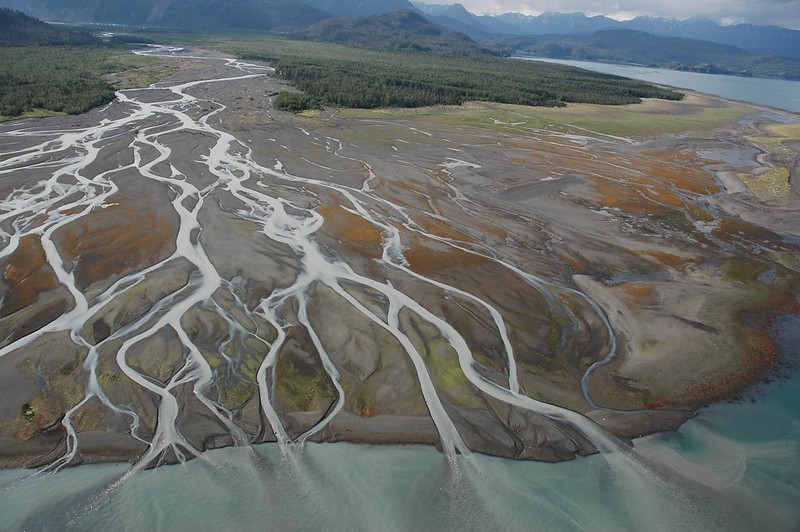What is the Atlantic Meridional Overturning Circulation (AMOC) and how does it work? Describe the causes and consequences of the most recent drop in AMOC. (Answer in 150 words)
La Niña refers to the large-scale cooling of ocean surface temperatures in the central and eastern equatorial Pacific Ocean, coupled with changes in the tropical atmospheric circulation, namely winds, pressure and rainfall. The current La Niña episode started in September 2020 and has continued forRead more
La Niña refers to the large-scale cooling of ocean surface temperatures in the central and eastern equatorial Pacific Ocean, coupled with changes in the tropical atmospheric circulation, namely winds, pressure and rainfall. The current La Niña episode started in September 2020 and has continued for a third consecutive year and has thus been classified as a ‘triple dip’ La Niña. According to the World Meteorological Organization (WMO), the first “triple-dip” La Niña of the 21st century will continue to affect different parts of the world as given below:
- Impact on atmospheric pressure: La Niña is characterized by lower-than-normal air pressure over the western Pacific. These low-pressure zones contribute to increased rainfall.
- Rainfall associated with the summer monsoon in Southeast Asia tends to be greater than normal, especially in northwest India and Bangladesh. This generally benefits the Indian economy, which depends on the monsoon for agriculture and industry.
- However, strong La Niña events are associated with catastrophic floods in northern Australia.
- Drought conditions: La Niña is also characterized by higher-than-normal pressure over the central and eastern Pacific. This results in decreased cloud production and rainfall in that region.
- Drier-than-normal conditions are observed along the west coast of tropical South America, the Gulf Coast of the United States, and the pampas region of southern South America.
- Temporary cooling impact on global temperatures: During La Niña years, the colder surfaces allow the oceans to absorb more heat from the atmosphere. Consequently, the air temperatures tend to go down, producing a cooling effect, but this is not enough to reverse or neutralize the impacts of global warming.
- Impact on fishing industry: La Niña usually has a positive impact on the fishing industry of western South America. Upwelling brings cold, nutrient-rich waters to the surface. Nutrients include plankton eaten by fish and crustaceans. Higher-level predators, including high-value fish species such as sea bass, prey on the crustaceans.
In light of these impacts, concerns are raised about the unfolding humanitarian catastrophe for millions of people in different parts of the world especially in the Horn of Africa, which is witnessing one of the longest and the most severe droughts. It is necessary to provide tailored information to the humanitarian sector and to support sensitive sectors like agriculture, food security, health, and disaster risk reduction.
See less


The Atlantic Meridional Overturning Circulation (AMOC) is a large system of ocean currents, like a conveyor belt, driven by differences in temperature and salinity. It is a thermocline circulation that carries warm surface waters from the tropics towards the Northern Hemisphere, where it cools and sRead more
The Atlantic Meridional Overturning Circulation (AMOC) is a large system of ocean currents, like a conveyor belt, driven by differences in temperature and salinity. It is a thermocline circulation that carries warm surface waters from the tropics towards the Northern Hemisphere, where it cools and sinks. It then returns to the tropics and then to the South Atlantic as a bottom current. From there it is distributed to all ocean basins via the Antarctic circumpolar current. This global process makes sure that the world’s oceans are continually mixed, and that heat and energy are distributed around the earth. However, the Intergovernmental Panel on Climate Change (IPCC) in its recent report highlighted that AMOC is losing its stability and is very likely to decline over the 21st century due to the following reasons:
However, the Intergovernmental Panel on Climate Change (IPCC) in its recent report highlighted that AMOC is losing its stability and is very likely to decline over the 21st century due to the following reasons:
Impact of the Decline of AMOC
There is a need to reconcile climate models with the presented observational evidence to assess how far or how close the AMOC really is to its critical threshold. Further, there is an urgent need to ensure the effective implementation of environmental commitments under the Paris climate deal by every country to address climate change and slow down the weakening of AMOC.
See less